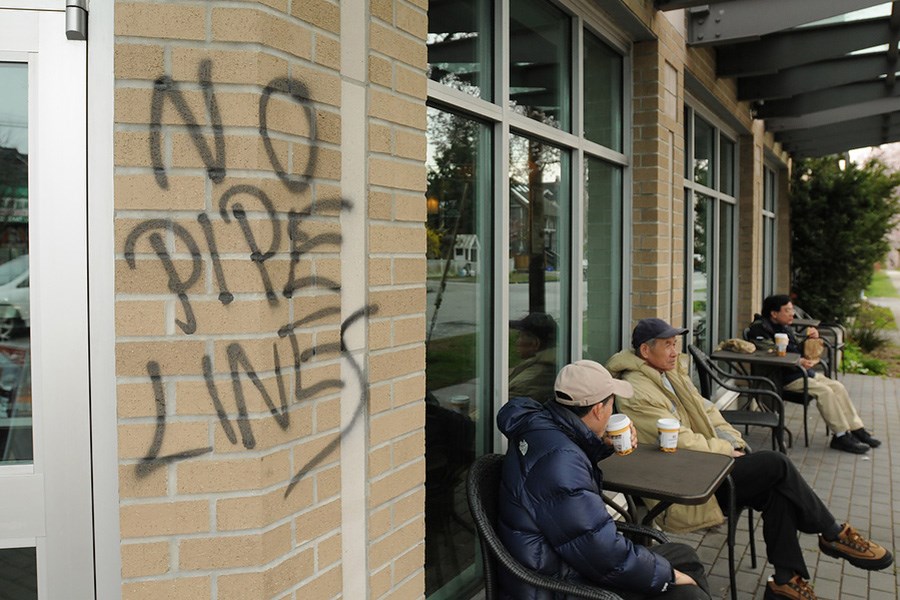The owner of a Subway shop on Oak Street has a message for the vandal who’s continually tagging the wall next to his store with the message “No Pipe Lines.”
“I’m not a big corporation, I’m just an individual franchise holder,” Preet Sran told the Vancouver Courier Monday. “This is the fourth time in the last month they’ve sprayed that wall.”
Sran said his landlord is responsible for having the graffiti removed, but that cost is taken from a common expense account shared between the retailers in the small strip mall.
“It seems to be happening every couple of days so it’s adding up,” said Sran.
Has graffiti increased in Vancouver in recent months? Complaints to the city about graffiti were up last month, but no one is yet calling it an increase.
The same tagger, or taggers, seems responsible for ruining a mural on Commercial Drive numerous times. The popular mural, the work of artist Milan Basic, has been tagged repeatedly with the words, “Oil Spill” and the “A” symbol synonymous with anarchy.
Ironically, the “Oil Spill” and “No Pipe Lines” tag is applied using petroleum-based spray paint.
Main and Cambie streets also shows numerous examples of the work of a vandal who uses large cartoon-style letters. An example of that graffiti covered two walls of windows at a vacant storefront at the corner of East 41st Avenue and Main Street for more than a month before it was recently removed.
Malek Burzynski, owner of Futur Graffiti Removal Services, tackled that removal job.
Burzynski was reluctant to offer much information for fear of encouraging the taggers even more, but he noted graffiti is more nticeable when it appears as a trend. He said the “No Pipe Line” tag is just another trend, as was the “Mohinder” tag that covered much of the city’s East Side last year.
“Trends in graffiti come and go,” said Burzynski. “When one disappears another takes its place.”
Randy Fincham, media relations officer for the Vancouver Police Department, agrees.
“We do see trends emerging when a specific tag begins to spread throughout the city,” Fincham said in an email to the Courier. “Others tend to stop.”
Fincham added the VPD’s Anti-Graffiti Unit investigates incidents of graffiti in the city. In addition there are a number of community police offices that conduct paint-over programs to remove the vandalism.
According to a statement from the city, there was an increase in 311 calls related to graffiti in February. The city is responsible for removing graffiti from street furniture such as electrical, newspaper and mail boxes, as well as bus shelters.
The city’s integrated graffiti management team is tasked with eradicating graffiti, the enforcement of the city’s graffiti bylaw, and education and prevention programs organized to deter the vandalism on public and private property. The team conducts approximately 30,000 graffiti removals a year on public property, according to the city.
In addition, staff at the integrated graffiti management program educate and support community groups, businesses and residents on graffiti eradication, partially by providing free paint and helping coordinate Keep Vancouver Spectacular/Community Paint Out events to remove the vandalism.
The city also offers several youth engagement and art programs, including community centre outreach for youth, RestART, a restorative justice art program for at-risk youth and a mural program among others.
Fincham said that anyone who sees graffiti in progress should call 911 immediately so it can be investigated. If it’s after the fact, he said the public is asked to call the Graffiti Hotline at 311 or 604-873-7000 or email police at vpdgraffiti@vpd.ca.
Story courtesy the Vancouver Courier.



